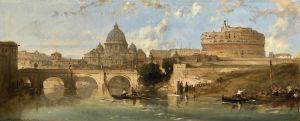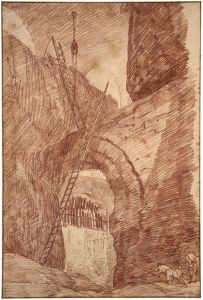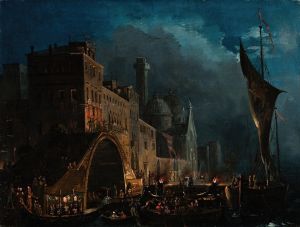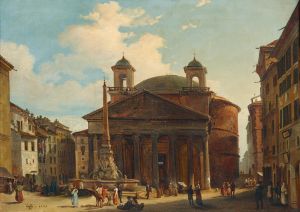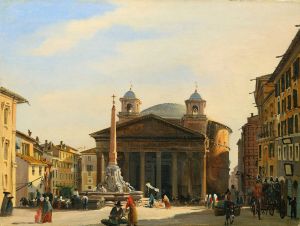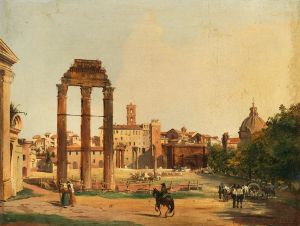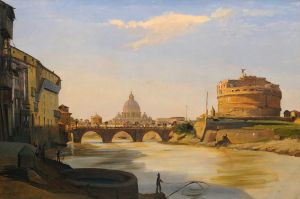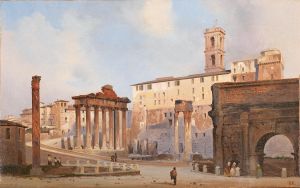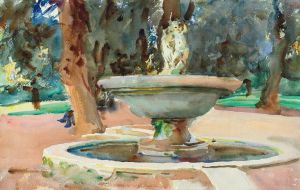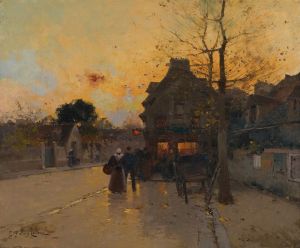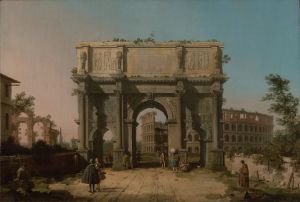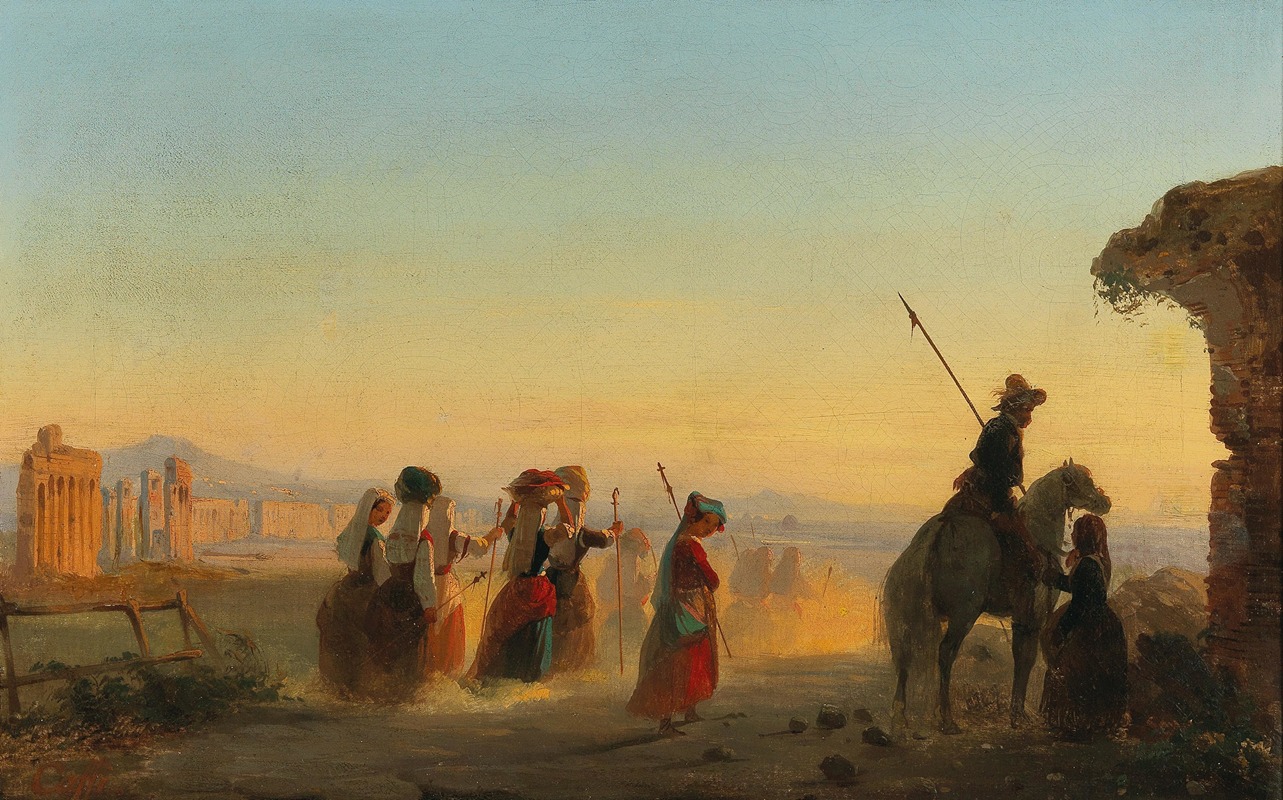
Rome, The Via Appia At Dawn
A hand-painted replica of Ippolito Caffi’s masterpiece Rome, The Via Appia At Dawn, meticulously crafted by professional artists to capture the true essence of the original. Each piece is created with museum-quality canvas and rare mineral pigments, carefully painted by experienced artists with delicate brushstrokes and rich, layered colors to perfectly recreate the texture of the original artwork. Unlike machine-printed reproductions, this hand-painted version brings the painting to life, infused with the artist’s emotions and skill in every stroke. Whether for personal collection or home decoration, it instantly elevates the artistic atmosphere of any space.
Ippolito Caffi's painting Rome, The Via Appia At Dawn is a work by the 19th-century Italian painter known for his atmospheric landscapes and cityscapes. Caffi, born in Belluno in 1809, was a prominent figure in the Romantic movement, celebrated for his ability to capture light and mood in his depictions of urban and natural scenes. This particular painting portrays the Via Appia, one of ancient Rome's most famous roads, during the early hours of the day.
The Via Appia, often referred to as the "Queen of Roads" (Regina Viarum), was a critical artery of the Roman Empire, connecting Rome to the southern regions of Italy. In Caffi's painting, the road is depicted under the soft light of dawn, emphasizing the interplay of shadows and the warm glow of the rising sun. The scene captures the timelessness of the ancient Roman landscape, juxtaposing the enduring legacy of the road with the fleeting beauty of the morning light.
Caffi's use of light and color in this work reflects his mastery of atmospheric effects, a hallmark of his artistic style. The painting demonstrates his keen interest in architecture and historical settings, as well as his ability to evoke a sense of place and time. The composition likely includes elements such as distant ruins, trees, and the characteristic straight path of the Via Appia, though specific details of the painting's content may vary depending on the version or interpretation.
Caffi's works often celebrated the grandeur of Italy's cultural and historical heritage, and Rome, The Via Appia At Dawn is no exception. His paintings were widely appreciated during his lifetime, and he traveled extensively to capture scenes from various cities and landscapes. Tragically, Caffi's life was cut short in 1866 when he perished during the Battle of Lissa while aboard the Italian warship Re d'Italia.
Today, Caffi's works are held in various collections, and his contributions to 19th-century art continue to be recognized for their technical skill and evocative qualities. Rome, The Via Appia At Dawn remains an example of his ability to blend historical reverence with artistic innovation, offering viewers a glimpse into the beauty and significance of one of Rome's most iconic landmarks.





